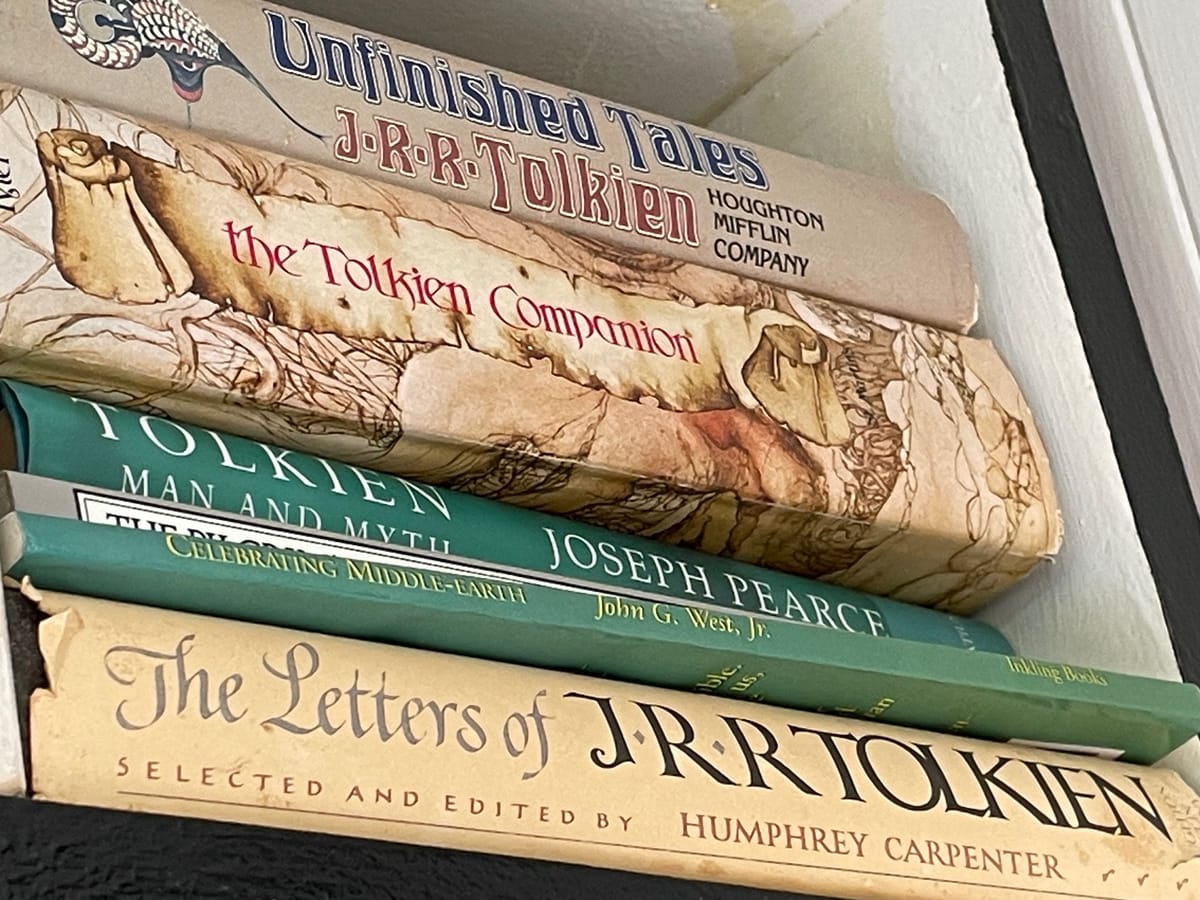Tolkien's Letters: Revised and Expanded
Isaiah Flair at University Bookman

It is always a privilege to travel through the articulate mind of the man who crafted the mythology of Middle-Earth. In his lifetime, that man wrote a prodigious proliferation of letters, many of which are included in the book aptly called The Letters of J.R.R. Tolkien. Some of the letters address the topic that Tolkien fans care about most: his fantasy fiction books, particularly The Lord of the Rings and The Silmarillion.
In a letter to publisher Milton Waldman in 1951, Tolkien provided a look behind the scenes of his writing processes: “Many children make up imaginary languages. I have been at it since I could write.” Tolkien’s passion for languages, including those that he created for his books, is well-known. Yet, in this letter, he focused on a different passion, one that was based on a love for myth and fairy story, and “above all for heroic legend on the brink of fairytale and history, of which there is far too little in the world.”
Tolkien was describing the kinds of books that he wanted to read, but couldn’t find enough to suit him. He lamented the lack of English books, in particular, that combined myth and fairytale in the way that he wanted. So, he decided to write the books that he wanted to read, which is what many of the best authors do.
In the part of the letter that sounds a lot like his blueprint for The Lord of the Rings, Tolkien writes, “I had a mind to make a body of more or less connected legend, ranging from the large and cosmogonic, to the level of romantic fairy story—the larger founded on the lesser in contact with the earth, and the lesser drawing splendor from the vast backcloths.” He wanted his story to “possess the tone and quality that [he] desired” (represented by the rustic ways of the hobbits), while having “the fair elusive beauty that some call Celtic” (represented by the mystical magic of the elves). That plan came to glorious fruition, and was even made into a movie trilogy by Peter Jackson.
Intriguingly, Tolkien also delved into a storytelling mechanism that he referred to as the Machine. Essentially, the Machine is the way that power is wielded in a story to get what is wanted. In many books and movies, the Machine is some sort of personal power. For example, in superhero movies, supervillains usually find some way to give themselves superpowers, which they then use to get what they want. However, Tolkien wanted a substantial focus on using external devices “instead of development of inner powers or talents.” The external devices that he chose included magic rings.
Read the rest


